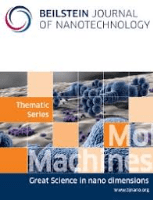
Beilstein Journal of Nanotechnology
Scope & Guideline
Leading the charge in nanotechnology advancements.
Introduction
Aims and Scopes
- Nanomaterial Synthesis and Characterization:
The journal publishes research on innovative methods for synthesizing nanomaterials, including chemical, physical, and biological approaches, and emphasizes the importance of characterization techniques such as electron microscopy, atomic force microscopy, and spectroscopy. - Applications in Nanomedicine:
A significant focus is on the development of nanomedicine, including drug delivery systems, cancer therapies, and biosensors, highlighting the potential of nanotechnology to revolutionize healthcare. - Environmental and Energy Applications:
Research addressing the use of nanomaterials for environmental remediation and energy conversion, such as photocatalysis and battery technologies, is a core area, reflecting the journal's commitment to sustainable development. - Nanoelectronics and Quantum Technologies:
The journal explores advancements in nanoelectronics, including quantum dots, superconducting materials, and novel electronic devices, contributing to the growing field of quantum technologies. - Interdisciplinary Research and Methodologies:
The Beilstein Journal promotes interdisciplinary research, combining insights from chemistry, physics, biology, and engineering to address complex challenges in nanotechnology.
Trending and Emerging
- AI and Machine Learning Applications:
There is a notable increase in research utilizing artificial intelligence and machine learning to predict the behavior of nanomaterials and optimize their synthesis and applications, indicating a trend towards data-driven approaches in nanotechnology. - Biocompatible Nanomaterials for Therapeutics:
The development of biocompatible nanomaterials for targeted drug delivery and therapeutic applications is gaining traction, reflecting the growing interest in personalized medicine and nanomedicine. - Sustainable and Green Nanotechnology:
Research focused on sustainable and environmentally friendly synthesis methods for nanomaterials is on the rise, highlighting a shift towards greener practices in nanotechnology. - Nanoengineering for Energy Solutions:
The journal is increasingly publishing studies on nanoengineering approaches aimed at enhancing energy efficiency and developing renewable energy technologies, such as advanced batteries and solar cells. - Integration of Nanotechnology in Biotechnology:
Emerging themes include the integration of nanotechnology with biotechnology for applications in diagnostics, biosensing, and therapeutics, indicating a convergence of these fields.
Declining or Waning
- Traditional Materials Science:
Research centered on conventional materials science applications is becoming less prominent, as the journal shifts towards more innovative and interdisciplinary approaches that leverage nanotechnology. - Basic Theoretical Studies:
The focus on purely theoretical studies without experimental validation is waning, as there is a growing preference for research that integrates theory with practical applications in nanotechnology. - General Reviews without Novel Insights:
The journal has seen a decrease in the publication of general review articles that do not provide new insights or perspectives, as the emphasis is now on original research that contributes to advancing the field.
Similar Journals
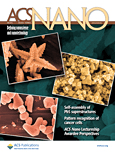
ACS Nano
Unveiling the Potential of NanomaterialsACS Nano, published by the American Chemical Society, stands as a prestigious journal in the domains of Engineering, Materials Science, Nanoscience, and Physics. With an exceptional impact factor reflecting its standing as a Q1 category journal in multiple disciplines, it plays a pivotal role in disseminating groundbreaking research from 2007 to 2024. Known for its rigorous peer-review process, the journal boasts impressive Scopus rankings—positioned at #1 in General Engineering and #6 in General Physics and Astronomy—placing it among the top 1% of journals in its field. Although it is not an open-access publication, ACS Nano provides a wealth of knowledge that is essential for advancing the development of nanotechnology and its applications across various industries. Researchers, professionals, and students alike will find in its pages a trove of innovative studies and insights that drive the future of materials science and engineering.
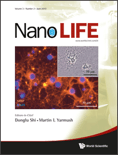
Nano LIFE
Elevating the discourse on nanoscale innovations in life sciences.Nano LIFE, published by World Scientific Publishing Company, is a multidisciplinary journal that delves into the dynamic fields of bioengineering, biomedical engineering, and pharmaceutical science, providing a platform for researchers to disseminate their cutting-edge findings. With an ISSN of 1793-9844 and e-ISSN 1793-9852, this journal emphasizes the significance of nanoscale research in healthcare and technology, positioning itself as a vital resource for professionals and academics alike. Although currently categorized in the Q4 quartile for multiple scientific disciplines in 2023, its unique focus on the intersection of nanotechnology and life sciences aims to elevate the discourse in these rapidly evolving sectors. Researchers can anticipate publishing innovative methodologies and results, contributing to the overall understanding and application of nanotechnology in medicine. Located in Singapore, Nano LIFE not only serves the global research community but also reflects the growing interest in nanotechnology across diverse fields.

APPLIED PHYSICS A-MATERIALS SCIENCE & PROCESSING
Bridging Physics and Engineering for a Sustainable FutureApplied Physics A: Materials Science & Processing, published by Springer Heidelberg, is an esteemed academic journal that has been at the forefront of innovative research since its establishment in 1995. With a strong focus on the intersection of physics, materials science, and engineering, this journal explores cutting-edge developments and applications that influence contemporary materials research. Categorized in the Q2 quartile across both Chemistry and Materials Science, it boasts respectable rankings in Scopus, affirming its influence and reach within the academic community. Although primarily a subscription-based journal, it is dedicated to disseminating high-quality research findings that advance our understanding in these fields. Researchers, professionals, and students alike can benefit from the journal's commitment to publishing comprehensive studies, methodological advancements, and insightful reviews that push the boundaries of knowledge in materials science.
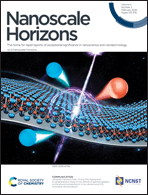
Nanoscale Horizons
Advancing Knowledge at the Nanoscale FrontierNanoscale Horizons is an esteemed journal published by the Royal Society of Chemistry, focusing on cutting-edge research in the field of nanoscale materials and their applications. Established in 2016, this journal quickly gained prominence, achieving a Q1 ranking in Materials Science (miscellaneous) and a notable rank of #32 out of 463 in the Scopus index, placing it in the 93rd percentile among its peers. With its rigorous peer-review process and commitment to disseminating high-impact research, Nanoscale Horizons serves as a vital platform for sharing innovative discoveries and interdisciplinary advancements. Researchers and professionals are invited to explore the exciting developments in nanotechnology through this publication, fostering collaboration and knowledge exchange in an ever-evolving field. Though currently not open access, the journal ensures that significant research findings are made available to a diverse audience keen on advancing materials science.
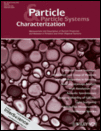
PARTICLE & PARTICLE SYSTEMS CHARACTERIZATION
Innovating Insights in Chemistry and PhysicsPARTICLE & PARTICLE SYSTEMS CHARACTERIZATION is a distinguished journal dedicated to advancing the knowledge within the fields of Chemistry, Condensed Matter Physics, and Materials Science. Published by WILEY-V C H VERLAG GMBH in Germany, this journal has established a solid reputation since its inception in 1984, showcasing research aimed at understanding the intricate properties and behaviors of particulate systems. With an impressive Q2 ranking in its respective categories and Scopus ranks indicating a robust standing in the global research community, it serves as an essential resource for researchers, professionals, and students. Although it does not currently offer Open Access options, its comprehensive articles and reviews provide valuable insights that contribute significantly to the ongoing discourse in these scientific domains. As it prepares to celebrate four decades of publication, PARTICLE & PARTICLE SYSTEMS CHARACTERIZATION continues to provide a vital platform for emerging knowledge, fostering innovation and collaboration among scientists dedicated to the study of particle systems.
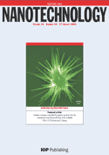
NANOTECHNOLOGY
Pioneering Research in Nanotechnology and Beyond.NANOTECHNOLOGY is a premier academic journal published by IOP Publishing Ltd, focusing on cutting-edge advancements in the interdisciplinary field of nanoscience and nanotechnology. With a strong emphasis on research that bridges biology, chemistry, engineering, and materials science, this journal presents high-quality, peer-reviewed articles that cater to the diverse interests of researchers, professionals, and students alike. NANOTECHNOLOGY boasts an impressive ISSN: 0957-4484 and E-ISSN: 1361-6528, and holds a notable position within Scopus, ranked in the second quartile (Q2) across multiple categories including Bioengineering and Mechanical Engineering, underscoring its vital role in advancing the field. The journal's impact is further highlighted by its robust rankings, making it essential reading for those looking to stay at the forefront of nanotechnology research. Commencing in 1990 and with publication extending through to 2024, NANOTECHNOLOGY provides a unique platform for disseminating significant findings and innovative methodologies while fostering collaborations across various scientific disciplines. In a rapidly evolving technological landscape, this journal not only enhances academic discourse but also contributes to the practical applications of nanotechnology in real-world scenarios.

Nanoscale Research Letters
Catalyzing collaboration in the world of nanotechnology.Nanoscale Research Letters, published by SPRINGER, is a leading open-access journal dedicated to the rapid dissemination of innovative research in the field of nanoscience and nanotechnology. Established in 2006, this journal provides researchers and professionals with a platform to share their groundbreaking findings across a broad spectrum of applications, including condensed matter physics and materials science. With an impressive Q1 ranking in both Condensed Matter Physics and Materials Science categories as of 2023, it asserts its position as a top-tier publication within the scientific community, bolstered by a 96th percentile rank in the Scopus database. Nanoscale Research Letters not only emphasizes the importance of nanotechnology research but also ensures that its findings are widely accessible, adhering to its open-access mandate. Scholars and students alike are encouraged to contribute to and engage with this dynamic resource, fostering collaboration and innovation in the ever-evolving world of nanoscience.
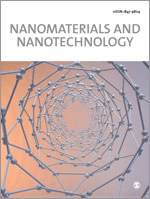
Nanomaterials and Nanotechnology
Advancing Innovations in Nanomaterials ResearchNanomaterials and Nanotechnology is a premier journal published by HINDAWI LTD, dedicated to advancing knowledge in the rapidly evolving fields of nanomaterials and nanoscale applications. Established as an Open Access platform since 2011, the journal aims to disseminate high-quality research that provides insights into nanotechnology's manifold aspects, including biotechnology, ceramics and composites, as well as electrical and electronic engineering. With a compelling impact factor reflected in its robust Scopus rankings—placing it in the 80th percentile in Engineering and the 72nd percentile in Biotechnology—it stands as a key resource for researchers, professionals, and students seeking to stay at the forefront of innovation in materials science. The journal occupies a distinguished position in the academic community, featuring studies that explore the synthesis, characterization, and application of nanomaterials, thereby contributing significantly to scientific discourse and technological advancement in this critical area.
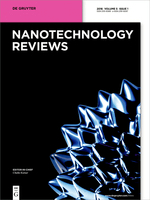
Nanotechnology Reviews
Discovering New Horizons in NanoscienceNanotechnology Reviews, published by DE GRUYTER POLAND SP Z O O, stands at the forefront of the multidisciplinary field of nanoscience and nanotechnology. With an Open Access model adopted since 2019, this journal, identifiable by its ISSN 2191-9089 and E-ISSN 2191-9097, disseminates vital research that is accessible to a global audience. The journal is located in Germany and has established itself as a premier platform for innovative research, boasting impressive quartile rankings: Q1 across several categories including Biotechnology, Energy Engineering, and Materials Science, as well as a Q2 classification in Biomaterials as of 2023. The diverse scope enables authors to contribute to a range of topics, from biomedical applications to energy solutions and advanced materials, making it essential reading for researchers, professionals, and students passionate about cutting-edge developments. Additionally, with Scopus rankings highlighting its value across various domains and robust percentiles, including 94 in Engineering (miscellaneous), 93 in Medicine (miscellaneous), and 88 in Biotechnology, Nanotechnology Reviews is an influential and respected journal that fosters scientific dialogue and innovation.

Small Science
Advancing the Frontiers of Catalysis and Materials ScienceSmall Science is an esteemed open-access journal published by WILEY, dedicated to pioneering research in the realms of catalysis, materials science, and chemical engineering. Established in 2021, this journal has rapidly gained recognition, ranking in the top quartiles (Q1) in various categories, including a remarkable 17th position in Materials Science and 8th in Chemical Engineering on Scopus. With an impact factor reflective of its growing influence and a commitment to disseminating cutting-edge knowledge, Small Science serves as a crucial platform for researchers, professionals, and students seeking to explore the latest advancements and applications in these dynamic fields. The journal's open-access model ensures wide reach and accessibility, facilitating collaboration and innovation across disciplines. Its headquarters are located in the United States, at 111 River St, Hoboken, NJ, supporting a global readership keen on addressing contemporary scientific challenges and driving progress in technology and materials synthesis.